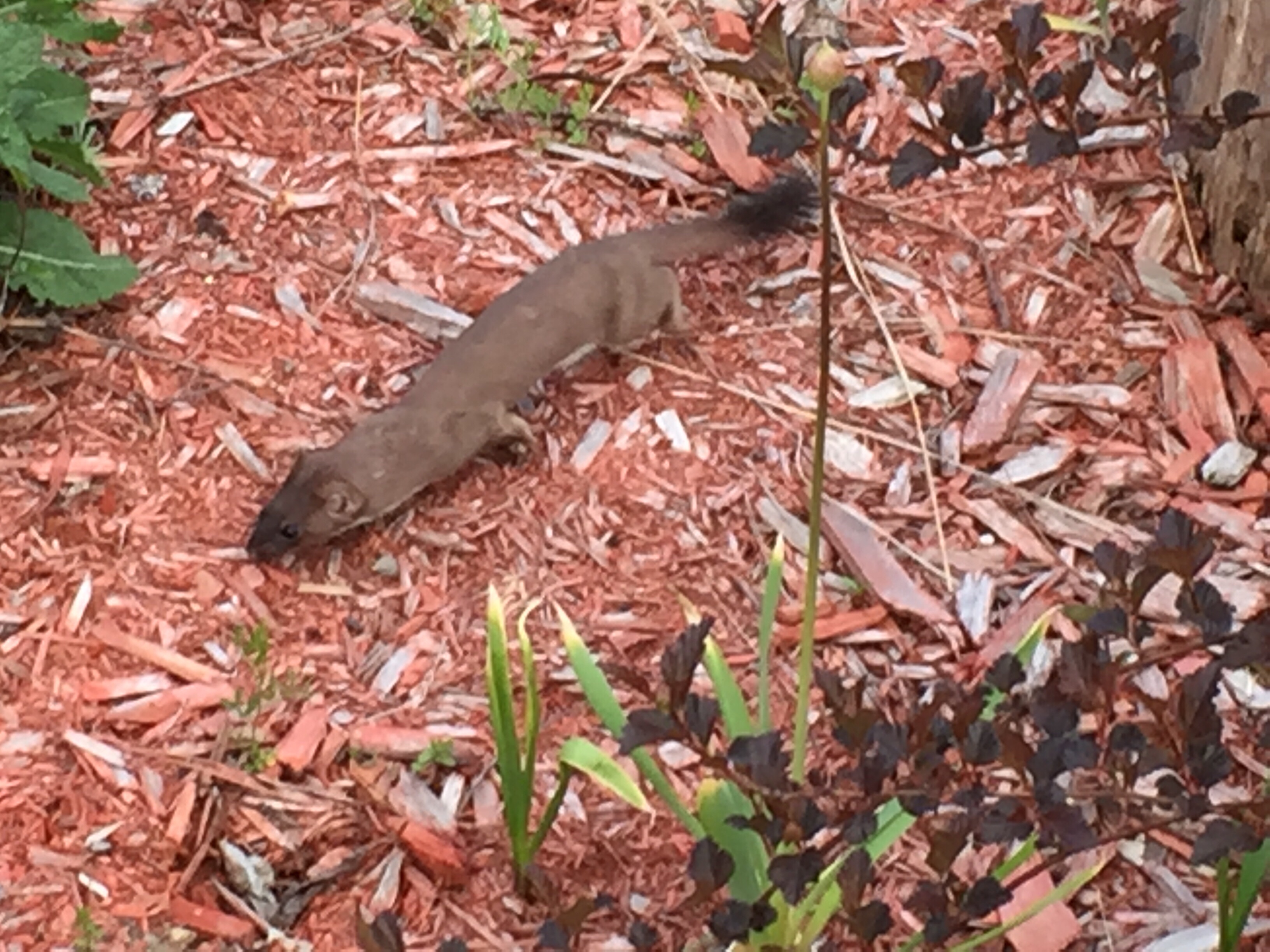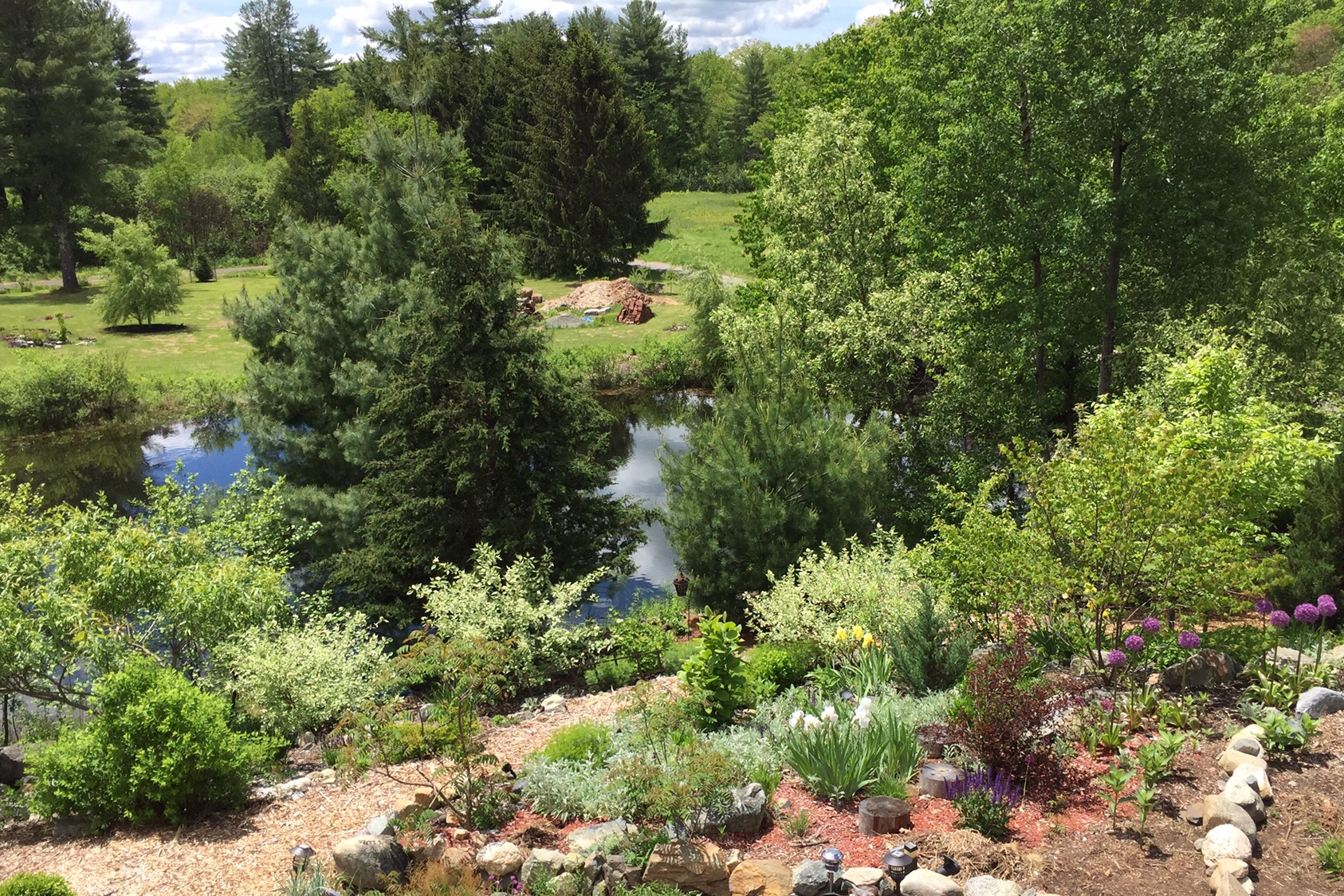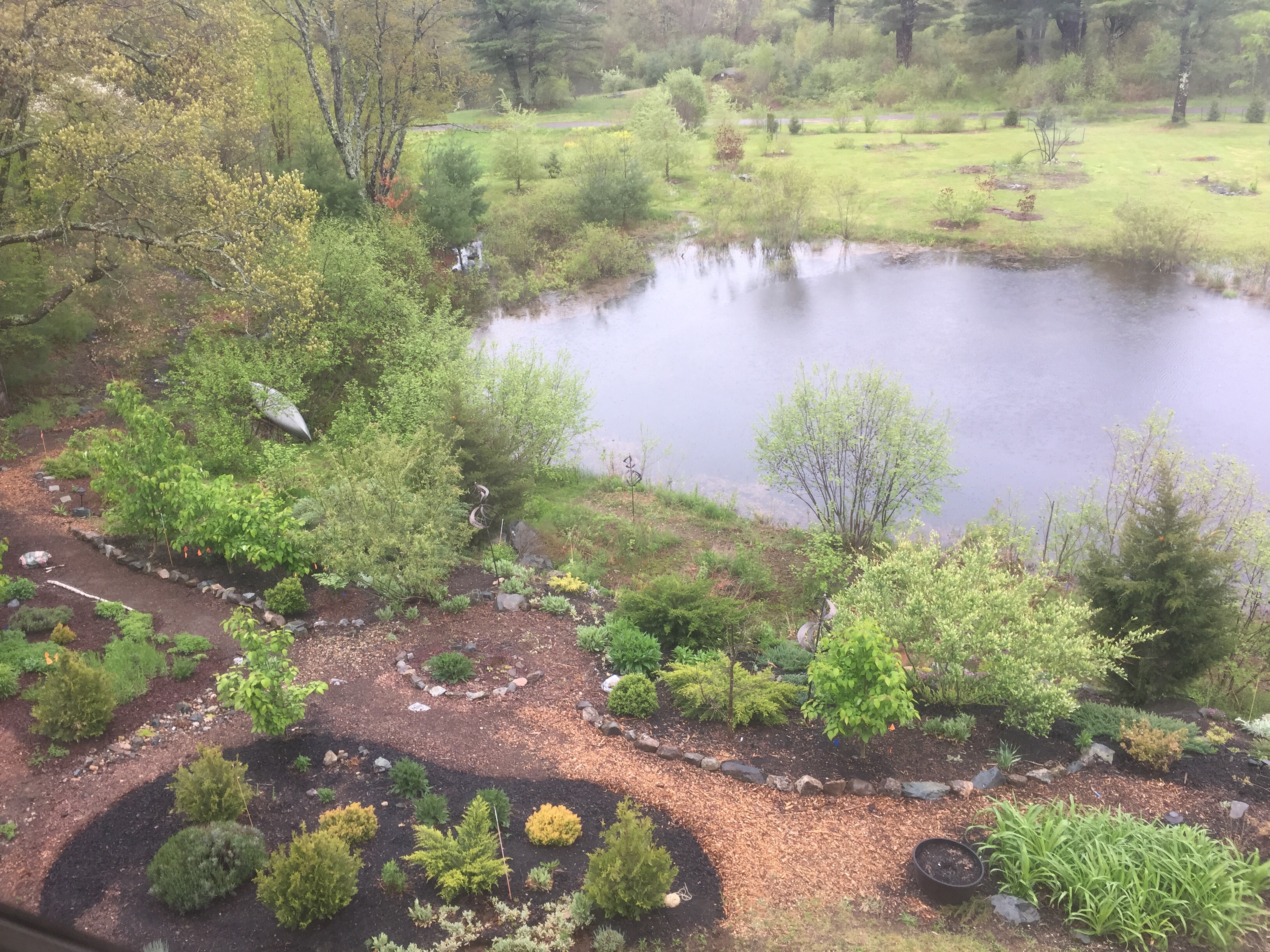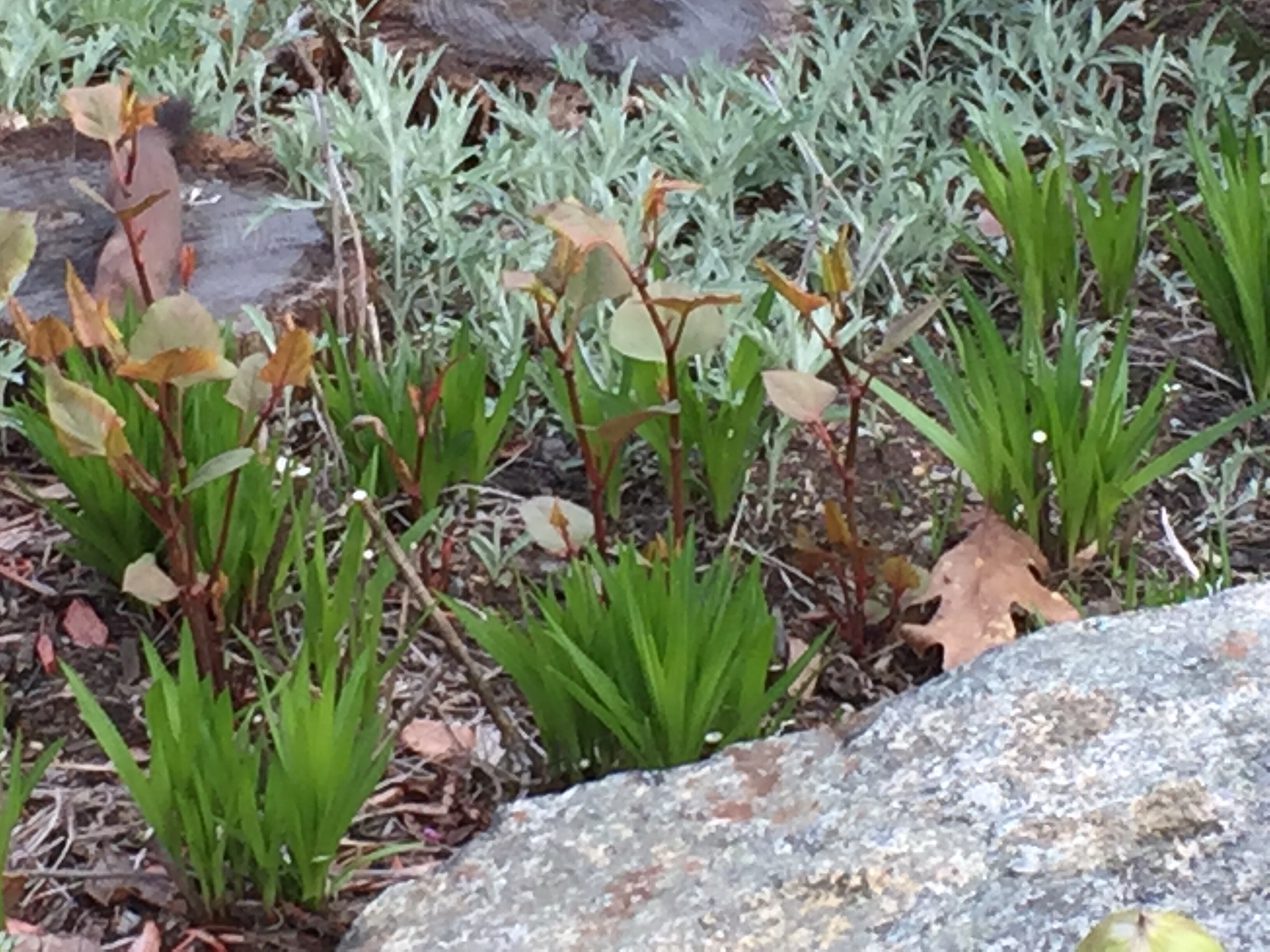We had some space I didn’t want to have to mow, plus cement blocks, rocks, straw, leftover mulch in different colors, and some old rusted brake rotors. This is what has come out of it all.

We had some space I didn’t want to have to mow, plus cement blocks, rocks, straw, leftover mulch in different colors, and some old rusted brake rotors. This is what has come out of it all.

A long-tailed weasel

Looks like a Fowler’s Toad.

The larger trees are mostly Eastern Red Cedar, white pine, quaking aspen, ash, chokecherry, elm and birch. In the middle ground are viburnum, magnolia, redbud, juniper and red twig dogwoods, and at left, willows and false spiraea. On the right, a burgundy-colored ninebark shrub was planted last fall. We’re also letting the staghorn sumac come up here because it’s great at stabilizing the slope. The alliums and irises are blooming.
We use wood chips on the pathway only; they don’t work for the slope, because they just get washed away. Note the wood chip pile beyond the pond. You can never have too many wood chips! For the steep slope, we try to use a combination of compost and mulch that has fragments that kind of hook into each other, so it won’t simply slide down.

Just for the sake of comparison, here’s what it looked like 6 years ago, in May of 2011, when it was overrun by knotweed and phragmites (and multiflora rose, bittersweet and buckthorn):
The pond is at its high water mark on a misty day. Beyond the pond, on the left, is an area I’ve been planting a native corridor for wildlife cover. Formerly, it was full of invasives, along with an old fence, shack and sunken backhoe. Quite improved now, from a human perspective also!

Just for jollies, here’s what it looked like 6 years ago, in May of 2011:
This knotweed thought it was going to get away with growing in between the irises and artemisia! In the spring, we simply dig them out, rhizome and all. These reddish things probably re-sprouted from tiny rhizome fragments in the soil. We cannot be too vigilant, and are always on the lookout for them.
